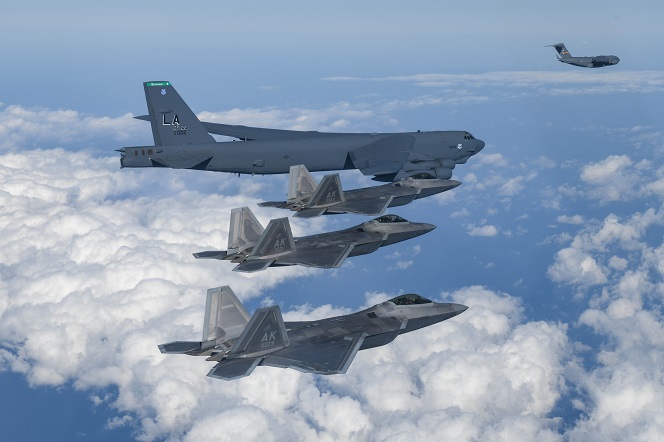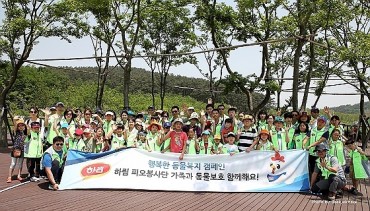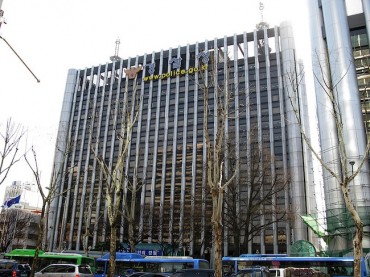
A U.S. B-52H bomber, F-22 stealth fighters and C-17 aircraft are seen flying for combined air drills with South Korean forces near the Korean Peninsula on Dec. 20, 2022, in this photo released by the Korean Air Force.
SEOUL, Dec. 20 (Korea Bizwire) — South Korea and the United States conducted combined air drills, involving U.S. B-52 strategic bombers and F-22 stealth fighters, on Tuesday, in an effort to strengthen the credibility of America’s “extended deterrence,” Seoul’s defense ministry said.
The drills took place in the South’s air defense identification zone southwest of its southern island of Jeju amid tensions caused by the North’s launch of two medium-range ballistic missiles (MRBM) on Sunday.
The South’s F-35A stealth jets and F-15K fighters also joined the drills.
The training session contributed to enhancing interoperability between the allied forces and strengthening their operational capabilities as the two countries’ newest-generation fighters practiced procedures to escort and protect the bomber, a key U.S. strategic asset, according to the ministry.
This week, the F-22 jets from Kadena Air Base in Okinawa, Japan, are to deploy to Kunsan Air Base in Gunsan, 275 kilometers south of Seoul.
They are to engage in separate drills with the South’s F-35A jets to strengthen capabilities to respond to the North’s nuclear and missile threats, the ministry said.
The U.S. F-22 jets previously visited the South for air drills in 2018.
“The deployment of the B-52H and F-22 fighters this time is part of an effort to reinforce the credibility of the U.S.’ extended deterrence,” the ministry said in a press release.
Extended deterrence refers to the U.S.’ commitment to using a full range of its military capabilities, including nuclear, to defend its ally.
The ministry made the remarks referring to an agreement from the allies’ defense ministerial talks last month to increase the frequency and intensity in the deployment of U.S. strategic assets to the Korean Peninsula.
“The South and the U.S. will further solidify the combined defense posture of the South Korea-U.S. alliance regarding the North’s nuclear and missile threats by continuing to strengthen the alliance’s capabilities and posture, including the U.S.’ extended deterrence,” the ministry said.
The South Korean military described Sunday’s missile launch by the North as that of MRBMs. Butthe North claimed the launch was part of a reconnaissance satellite development effort.
The launch was conducted at the North’s key western rocket launch site in Tongchang-ri, where the North claimed to have tested a “high-thrust solid-fuel” rocket motor last week to develop another “new-type strategic weapon system.”
The motor test was seen as part of Pyongyang’s push to develop a solid-fuel intercontinental ballistic missile, which takes less launch preparation time than a liquid-fuel one that requires fuel injection and other procedures.
(Yonhap)






